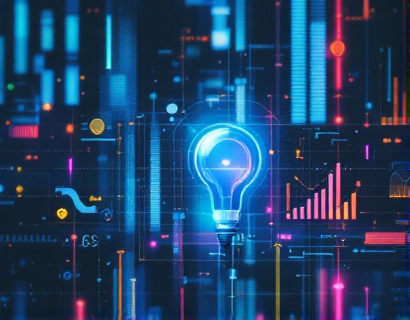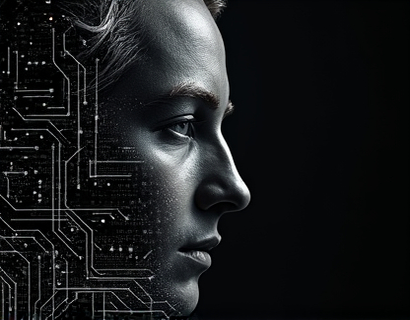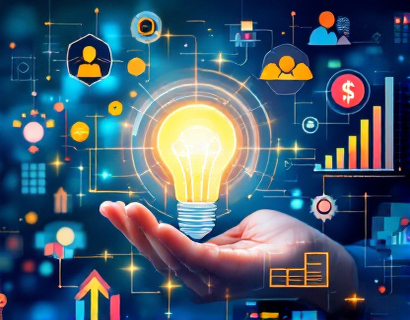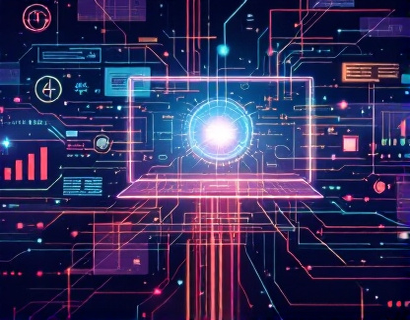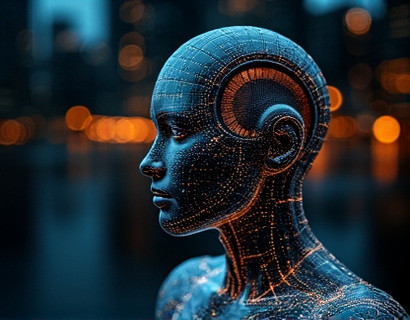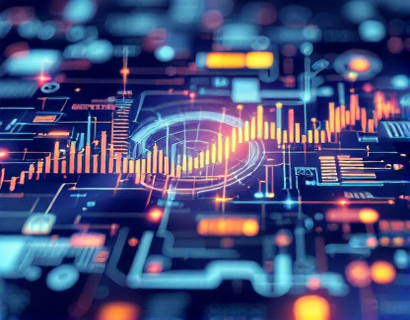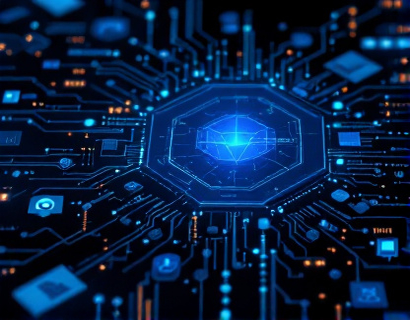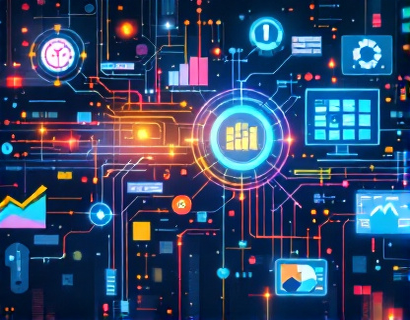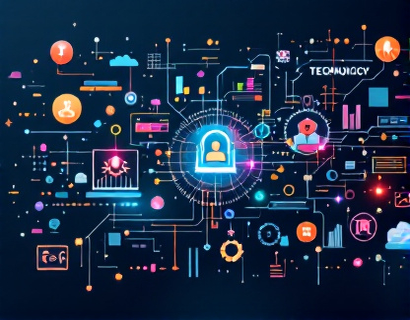Revolutionizing Digital Experiences: The Synergy of Crypto and AI in the Blockchain Era
The intersection of cryptocurrency and artificial intelligence (AI) is ushering in a new era of digital transformation, fundamentally altering how businesses operate and how users interact with digital services. This fusion, often referred to as BlockchainAI, is not just a technological trend but a paradigm shift that is redefining the landscape of digital experiences. For tech leaders and innovators, understanding and leveraging this synergy is crucial for staying competitive and relevant in the rapidly evolving blockchain era.
The Foundations of Cryptocurrency and AI
Cryptocurrency, since its inception with Bitcoin in 2009, has revolutionized the way we think about money and transactions. It introduced a decentralized, secure, and transparent system that operates on a distributed ledger technology known as blockchain. This technology ensures that transactions are immutable and verifiable without the need for intermediaries, thus reducing costs and increasing efficiency.
Artificial intelligence, on the other hand, involves the simulation of human intelligence processes by machines, particularly computer systems. These processes include learning (the acquisition of information and rules for using it), reasoning (using rules to reach approximate or definite conclusions), and self-correction. AI has advanced significantly with the advent of machine learning and deep learning, enabling systems to perform tasks that traditionally required human intervention.
How Crypto and AI Complement Each Other
The combination of cryptocurrency and AI creates a powerful synergy that enhances the capabilities of both technologies. Cryptocurrency provides a secure and decentralized platform for AI applications, while AI brings intelligence and automation to the blockchain ecosystem. This partnership can lead to more secure, efficient, and intelligent digital experiences.
One of the primary ways AI enhances cryptocurrency is through improved security. AI algorithms can detect and prevent fraudulent activities by analyzing patterns and anomalies in transaction data. This real-time monitoring and threat detection significantly reduce the risk of cyber attacks and enhance the overall security of blockchain networks.
Moreover, AI can optimize blockchain performance. By analyzing vast amounts of data, AI can identify bottlenecks and inefficiencies in the network, suggesting improvements and automating processes to enhance scalability and speed. This is particularly important for blockchains that aim to support high-volume transactions, such as those in finance and supply chain management.
Enhancing User Experiences with BlockchainAI
The integration of AI in blockchain applications is not just about backend improvements; it also significantly enhances user experiences. For instance, AI-driven chatbots and virtual assistants can provide users with personalized and instant support, answering queries and guiding them through complex processes. This level of customer service is unparalleled in traditional systems, where response times can be delayed and interactions less personalized.
Personalization is another key area where AI shines in the blockchain ecosystem. By leveraging user data and behavior patterns, AI can tailor experiences to individual preferences, making services more relevant and engaging. For example, in decentralized finance (DeFi) platforms, AI can recommend investment strategies based on a user's risk tolerance and financial goals, providing a more customized and effective financial experience.
Use Cases of BlockchainAI
The potential applications of BlockchainAI are vast and varied, spanning multiple industries. Here are some notable use cases that illustrate the transformative power of this technology:
- Finance: BlockchainAI can revolutionize the financial sector by enabling faster, cheaper, and more secure transactions. AI-driven risk assessment and compliance monitoring can streamline processes, reduce fraud, and ensure regulatory adherence.
- Supply Chain Management: By combining blockchain's transparency with AI's predictive analytics, companies can track products from origin to destination with unprecedented accuracy. This not only enhances efficiency but also ensures authenticity and quality.
- Healthcare: In healthcare, BlockchainAI can secure patient data while enabling seamless sharing between providers. AI can analyze medical records to provide personalized treatment recommendations and predict patient outcomes, improving overall care quality.
- Identity Verification: Decentralized identity solutions powered by BlockchainAI can give individuals control over their personal data, reducing the risk of identity theft and simplifying verification processes for various services.
These use cases demonstrate how BlockchainAI can address specific industry challenges, offering innovative solutions that enhance security, efficiency, and user experience.
Challenges and Considerations
While the potential of BlockchainAI is immense, there are several challenges and considerations that tech leaders must address:
First, the technical complexity of integrating AI with blockchain requires a skilled workforce. Organizations need to invest in training and hiring professionals who can navigate both technologies effectively. Additionally, the interoperability of different blockchain platforms and AI systems is a significant hurdle that needs to be overcome to ensure seamless integration.
Another critical aspect is data privacy and regulation. As AI systems rely heavily on data, ensuring compliance with data protection laws and maintaining user privacy is paramount. Blockchain's transparency can sometimes conflict with the need for data anonymization, so finding the right balance is essential.
Lastly, the energy consumption of blockchain, particularly proof-of-work (PoW) systems, is a growing concern. While AI can help optimize blockchain operations, the environmental impact must be considered. Exploring more sustainable consensus mechanisms and renewable energy sources is crucial for the long-term viability of BlockchainAI solutions.
Navigating the Blockchain Era with BlockchainAI
For tech leaders and organizations looking to thrive in the blockchain era, embracing the fusion of cryptocurrency and AI is not optional but necessary. Here are some strategic steps to navigate this new landscape:
First, stay informed and educated about the latest developments in both blockchain and AI. Attend conferences, read industry publications, and participate in forums to stay ahead of the curve.
Second, assess your current digital infrastructure and identify areas where BlockchainAI can add value. Whether it's enhancing security, improving user experiences, or optimizing operations, a clear understanding of your needs will guide your implementation strategy.
Third, collaborate with experts and partners who specialize in BlockchainAI. Building a network of innovators and technologists can provide valuable insights and support as you embark on this journey.
Finally, adopt a flexible and iterative approach. The technology is rapidly evolving, and what works today may need to be adjusted tomorrow. Embrace experimentation and be willing to pivot based on feedback and new discoveries.
By following these steps, organizations can harness the power of BlockchainAI to not only stay competitive but also lead the charge in creating innovative and secure digital experiences.
Conclusion
The convergence of cryptocurrency and AI is more than just a technological trend; it is a fundamental shift that is redefining the digital landscape. For tech leaders and innovators, embracing this synergy is essential for success in the blockchain era. By understanding the capabilities and challenges of BlockchainAI, and by strategically integrating these technologies, organizations can unlock new possibilities and drive meaningful change. The future is here, and it is powered by the intelligent and secure fusion of blockchain and AI.




